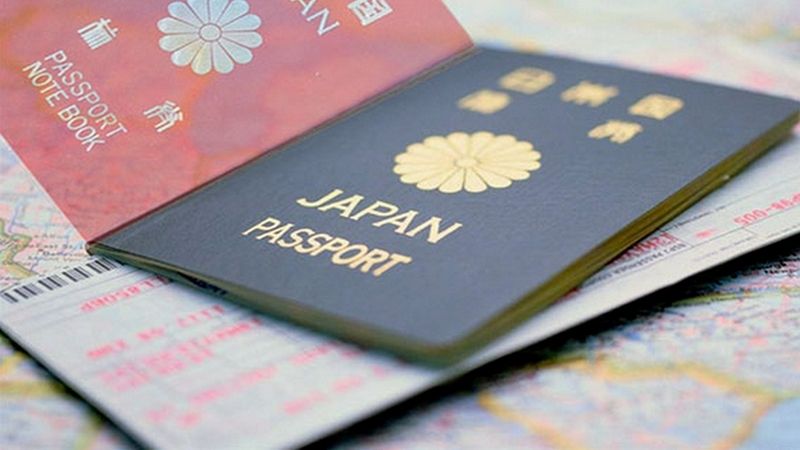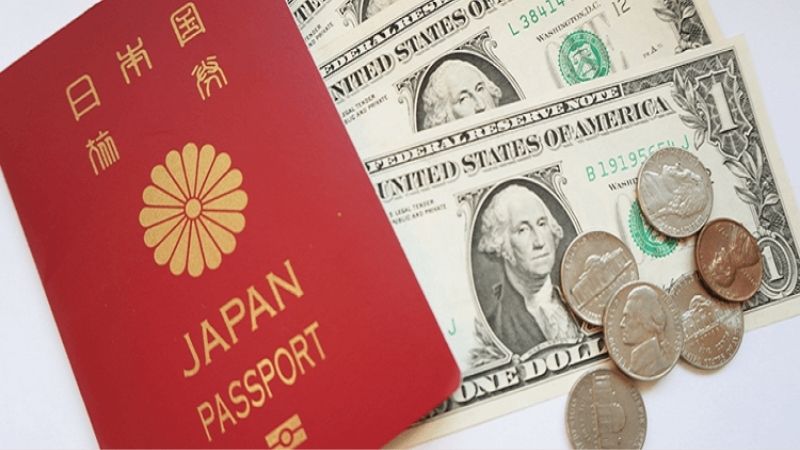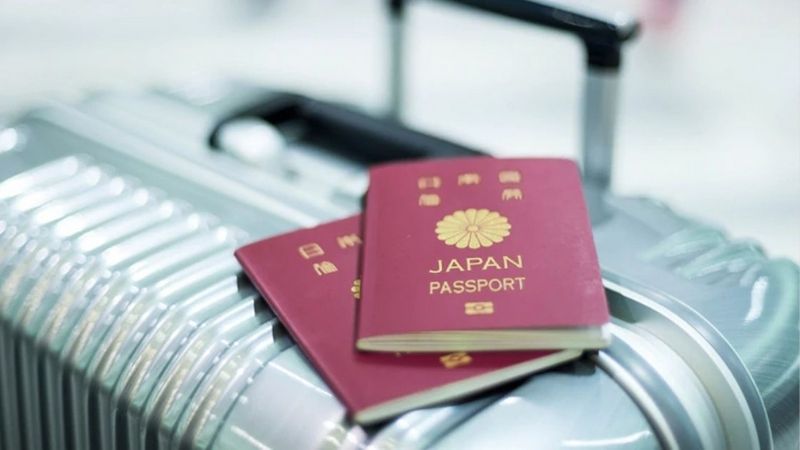If you’ve always wanted to visit Japan, the Land of the Rising Sun, but feel daunted by the visa application process, you’ve come to the right place. This article will guide you through the necessary steps and requirements to apply for a Japanese visa, so you can start planning your journey.
1 Japanese Visa Application Process
The documents you’ll need for your Japanese visa application will vary depending on the type of visa you’re applying for. However, there are some standard documents that are typically required, which we’ll outline below.
The basic documents for a Japanese visa application include:
– Personal documents
– Employment documents
– Financial documents
– Travel itinerary
For a Japanese Business Visa application:
Personal Documents: You’ll need a valid passport, two passport-sized photos (45 x 45 mm) on a white background, copies of your passport’s main page and stamp pages, and certified copies of your ID card, household registration book, and marriage certificate (if applicable). Don’t forget to fill out the Japanese business visa application form.
Financial Documents: Show proof of funds with a savings book and bank statement reflecting a minimum balance of 5,000 USD. Additionally, provide any land or property ownership documents, if available.
Employment Documents: Submit certified copies of your employment contract, labor contract, decision on employment, and decision on appointment. Also, include your salary statement and the official assignment letter for your business trip to Japan. The original invitation letter from your Japanese host is crucial.
 Basic documents for a Japanese visa application
Basic documents for a Japanese visa application
Documents for your company in Vietnam: Provide a certified copy of the company’s business registration certificate, original tax declaration forms for the last three months, and confirmation of the company’s bank account balance.
Travel Documents: Confirmed flight and hotel bookings, travel insurance, and a detailed business trip itinerary are essential.
For a Japanese Tourist Visa application (when visiting family):
Personal Documents: Ensure your passport is valid for at least six months from the date of departure. You’ll also need a Japanese visa application form and one photo (45 x 45 mm). Prove your family relationship with documents such as a birth certificate, marriage certificate, or household registration book.
Employment Documents: Gather your employment contract, decision on employment or appointment, and salary statements for the last three months. If applicable, include a leave request form for your visit.
Financial Documents: Provide a copy of your savings book and a bank statement showing a balance of at least 150,000,000 VND per person. Also, submit copies of your land and vehicle ownership certificates, if available.
Documents to be provided by your host in Japan:
– Invitation letter stating the purpose of your visit
– Family register if your host is a Japanese national or married to one
If your host is sponsoring your expenses:
– Guarantee letter from the host
– Host’s income certificate, bank statement, copy of tax registration, or tax payment certificate
– Citizen’s registration form, including family member information
If the host or sponsor is a foreign national:
– Copies of both sides of the “Residence Card”
– Passport copies (page with photo and visa) instead of the Citizen’s Registration form
2 Where to Submit Your Japanese Visa Application?
You have two options for submitting your Japanese visa application:
– Japanese Embassy/Consulate in Hanoi or Ho Chi Minh City
– Japanese Visa Application Center, VFS Global (with offices in Hanoi and Ho Chi Minh City)
Option 1: Submitting at the Japanese Embassy/Consulate
Once you’ve prepared all the necessary documents, you can head to the designated locations to submit your application. The submission location depends on your place of residence as indicated on your documents:
– For applicants in provinces from Gia Lai and Binh Dinh to the north: Japanese Embassy in Hanoi, 27 Li?u Giai, Ba Dinh District, Hanoi.
– For applicants in provinces from Dak Lak and Phu Yen to the south: Japanese Consulate in Ho Chi Minh City, 261 Dien Bien Phu, District 3, Ho Chi Minh City.
Submission and Collection Times:
– Open Monday to Friday, excluding holidays.
– Submission hours: 8:30 AM to 11:30 AM.
– Collection hours: 1:30 PM to 4:45 PM.
Submission Process:
Arrive at the Embassy/Consulate about 30 minutes early to queue and get a number. Bring a pen and glue for your passport photo. After submitting your application, you’ll receive a receipt, and they’ll contact you when your visa is ready. Processing times vary but typically take one to two weeks.
Option 2: Submitting at VFS Global
VFS Global is an authorized partner of the Japanese government for visa applications in Vietnam, with centers in Hanoi and Ho Chi Minh City.
Submitting Your Japanese Visa Application at VFS Global:
Northern Region: Ocean Park Building, 2nd Floor, 1 Dao Duy Anh Street, Phuong Mai Ward, Dong Da District, Hanoi, Vietnam.
Southern Region: 3rd Floor, Resco Building, 94-96 Nguyen Du Street, Ben Nghe Ward, District 1, Ho Chi Minh City, Vietnam.
Submission and Collection Times at VFS Global Hanoi and Ho Chi Minh City:
– Open Monday to Friday, excluding holidays.
– Submission hours: 8:30 AM to 3:00 PM.
– Collection hours: 1:00 PM to 4:00 PM.
 Submitting your application at VFS Global
Submitting your application at VFS Global
Submission Process at VFS Global:
The Japanese Consulate does not accept mail-in applications. The visa applicant must be present at the submission, except in specific cases where a representative is allowed. These cases include group travel, business/conference visits, applicants under 16 or over 60 with health issues, and training center staff submitting for trainees.
When submitting at VFS Global, present your ID card for entry, take a number, and wait for your turn. If your documents are complete, you’ll receive a “Receipt of Application” and can leave. Otherwise, the Embassy will provide a “List of Missing Documents” for you to complete your application.
3 How Long Does It Take to Get a Japanese Visa?
The processing time depends on the type of visa you’re applying for. For a single-entry visa, it typically takes 7 to 10 days, while a multiple-entry visa can take 10 to 15 days. On average, you can expect a processing time of about 7 working days, excluding weekends.
However, several factors can influence processing times, such as a high volume of applications, peak travel seasons, and incomplete or incorrect documentation. So, it’s essential to allow for potential delays and ensure your application is thorough and accurate.
4 Japanese Visa Application Fee
The Embassy/Consulate sets visa application fees based on validity, with three categories:
– Single-entry visa: 630,000 VND
– Multiple-entry visa: 1,250,000 VND
– Transit visa: 150,000 VND
 Japanese visa application fees
Japanese visa application fees
At the Japanese Visa Application Center (VFS Global), the fees are as follows:
– Single-entry visa: 630,000 VND
– Multiple-entry visa: 1,250,000 VND
– Transit visa: 150,000 VND
– Service fee: 200,000 VND
Note: These fees do not include translation, notarization, or other additional service charges.
5 Important Tips for Your Japanese Visa Application
Here are some essential tips to increase your chances of a successful Japanese visa application:
– Include birth certificates for children and a marriage certificate for your spouse, if applicable.
– Ensure all documents are translated into English and bear the seal of the Department of Justice.
– An original, officially sealed invitation letter from your host in Japan will significantly strengthen your application.
 Key tips for your Japanese visa application
Key tips for your Japanese visa application
– Pay attention to photo requirements. Your photo should be 45 mm x 45 mm, clear, against a plain white background, and no older than six months. Ensure it meets the specified standards to avoid rejection.
– You may wear glasses in the photo, but your eyes must be clearly visible, and avoid frowning or making facial expressions.
With proper preparation and attention to detail, your dream trip to Japan is within reach. We hope this article has provided valuable insights into the Japanese visa application process.
Further Reading:






























